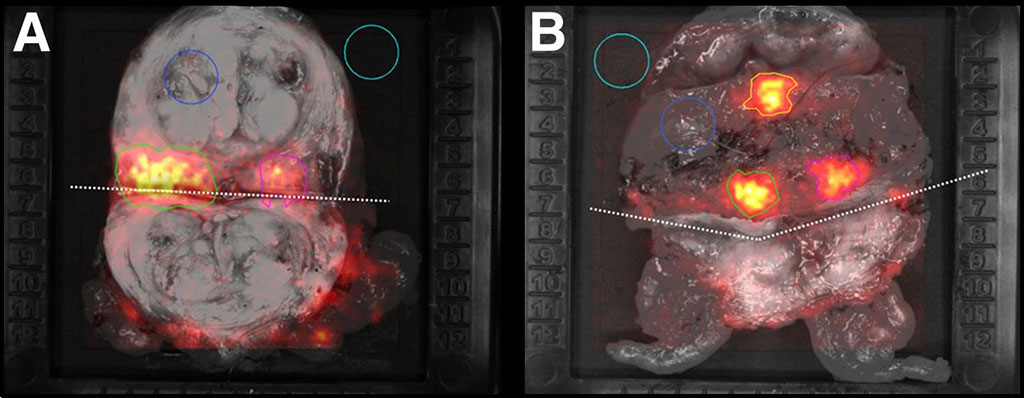Intraoperative Imaging Helps Identify Surgical Margins
By MedImaging International staff writers
Posted on 10 Nov 2020
A new study shows that Cerenkov luminescence imaging (CLI) can accurately assess surgical margins during radical prostatectomy.Posted on 10 Nov 2020
Researchers at University Hospital Essen (Germany) and Lightpoint Medical (Chesham, United Kingdom) conducted a study involving 10 patients with high-risk primary prostate cancer, in whom 68Ga-prostate-specific membrane antigen (PSMA) PET/CT scans were performed, followed by radical prostatectomy and intraoperative CLI of the excised prostate to determine tumor margins by analyzing elevated signals on pre-surgical images of the intact prostate. Tumor margin status as detected by CLI was then compared to postoperative histopathology to determine accuracy.

Image: CLI manifesatations on excised tissues (Photo courtesy of Lightpoint Medical)
The results revealed that tumor cells were successfully detected on the incised prostate CLI images and confirmed by histopathology. Three of the patients had positive surgical margins, and in two of them, elevated signal levels enabled correct identification on CLI. Overall, 73% of the 35 CLI regions of interest proved to visualize tumor signaling according to standard histopathology. False-positive signals were seen mainly at the prostate base, with cancer cells overlaid by benign tissue. The study was published in the October 2020 issue of the Journal of Nuclear Medicine.
“Radical prostatectomy could achieve significantly higher accuracy and oncological safety, especially in patients with high-risk prostate cancer, through the intraoperative use of radioligands that specifically detect prostate cancer cells,” said senior author Boris Hadaschik, PhD, director of the clinic for urology at University Hospital Essen. “In the future, a targeted resection of lymph node metastases could also be performed in this way. This new imaging combines urologists and nuclear medicine specialists in the local treatment of patients with prostate cancer.”
CLI relies on a physical phenomenon known as Cerenkov radiation, an electromagnetic radiation emitted when a charged particle (such as an electron) passes through a dielectric medium at a speed greater than the phase velocity of light in that medium. CLI manifests as a weak blue light that reveals diseased tissue that can be detected with simple optical sensors. It also is compatible with commercially available optical imaging instruments and a wide selection of nuclear imaging agents.
Related Links:
University Hospital Essen
Lightpoint Medical














